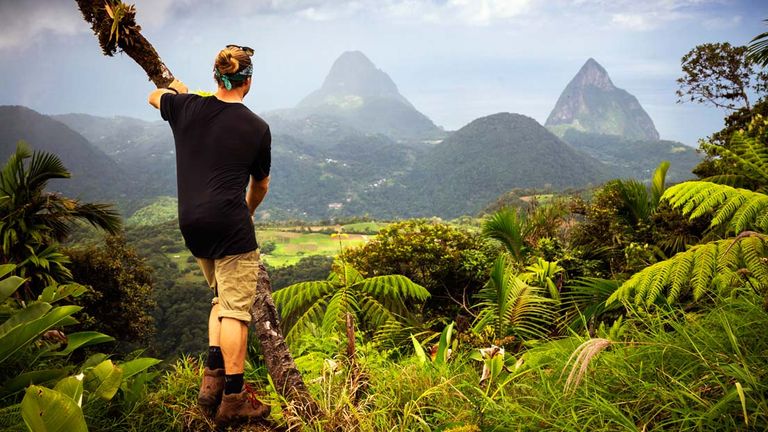An increasing number of travelers are craving authentic travel experiences with a solid connection to local history, culture and traditions. That’s common knowledge, based on a number of recent travel surveys.
Yet many people who vacation in the Caribbean don’t leave the confines of their resort. So how do those who are less familiar with the Caribbean combine their sun-and-sand time with traditional and Indigenous cultural experiences?
Depending on the destination, hotel and tour operator, it can be relatively easy to create a more culturally rich vacation for clients in the Caribbean — one that celebrates the roots of the region.
There’s certainly lots to build on: Many islands in the Caribbean were once inhabited by various Indigenous groups, and those cultures — while greatly diminished by the arrival of Europeans — still influence the way people live throughout the region (and are enhanced by traditions brought from Africa, as well).
Dominica
One of the most rewarding places to experience living Indigenous culture is Dominica, where the Kalinago people live in multiple villages across the island’s east coast. Secret Bay, a Relais & Chateaux rainforest resort, offers guided visits to the Kalinago Barana Aute cultural village, where guests can learn about the island’s first inhabitants, shop for handicrafts and even sample traditional culinary creations such as cassava bread.
 Dominica is a great destination for learning about Indigenous culture.
Dominica is a great destination for learning about Indigenous culture.
Credit: 2023 Chad Ambo, Discover DominicaPuerto Rico
In Puerto Rico, meanwhile, the destination’s tourism marketing organization, Discover Puerto Rico, has created a self-guided Taina Route that highlights a number of destinations around the island that are important in terms of pre-Columbian history. These include Cueva del Indio (Cave of the Indian) in Arecibo, which is home to the destination’s largest concentration of petroglyphs; Centro Ceremonial Indigena Caguana (Caguana Indigenous Ceremonial Center), an archaeological site with 10 plazas and 21 petroglyphs; and Centro Ceremonial Indigena de Tibes (Tibes Indigenous Ceremonial Center), an archaeological site with two plazas and seven ball fields.
St. Lucia
Multiple hotels in St. Lucia, too, offer opportunities for guests to learn about Indigenous culture. Wellness resort StolenTime runs the Lucian Country Life guided tour program, which brings participants to local markets, a natural parkland and a traditional hut built in indigenous style.
 The Lucian Country Life guided tour
The Lucian Country Life guided tour
Credit: 2023 StolenTimeAlso in St. Lucia is Jade Mountain, where guests can join a resident walking and hiking expert named Meno for a tour of the 18th-century French Colonial plantation of Anse Mamin. Meno’s grandmother was a bush doctor, and he shares some of her secrets, as well as stories about the history of slavery on the island.
Martinique
African traditions in the Caribbean are also a focus at La Savane des Esclaves, a recreation of a traditional village in Martinique representing the period right after the emancipation of the island’s slaves. The huts showcase a blending of both African and indigenous Caribbean architectural practices.
Dominican Republic
For an in-depth look at the multifaceted Indigenous and African roots of the Dominican Republic, Dominican Abroad offers a nine-day Dominican Heritage Tour that includes a Taino history and culture presentation; a visit to Villa Mella, a municipality known for its preservation of Afro-Dominican cultural traditions; and a stop at a family farm in the rural municipality of Monte Plata, complete with a medicinal plant workshop.
Jamaica
Jamaica also has some guided tour options that showcase traditions born on the island that have strong African roots. Rastafari Indigenous Village, for example, is a community-based attraction that teaches visitors about nature-based Rastafarian life and traditions. The facility offers both day tours and five-day retreats, but reservations are required, and visitor numbers are limited. Another way of learning more about such traditions is by booking with an operator such as Jamaica Get Away Travels, which offers a Rastafarian Indigenous Village Tour from Montego Bay that includes music, a cultural presentation and a chef-led tour of the village kitchen.